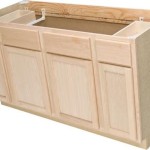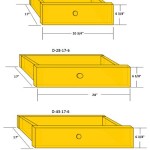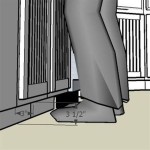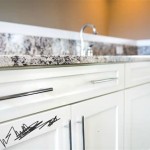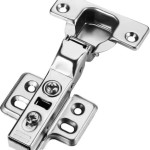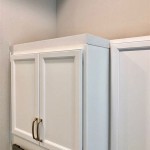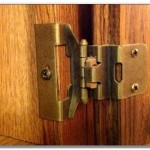Best Thickness For Kitchen Cabinets
The thickness of kitchen cabinets is a crucial factor that impacts both the durability and functionality of your kitchen. Choosing the right thickness ensures that your cabinets withstand daily use while complementing your kitchen's overall design. ### Standard Thickness Range Standard kitchen cabinets typically fall within a thickness range of 3/4 inch to 1 inch. Thinner cabinets, around 5/8 inch, are suitable for lightweight items and less demanding areas, while thicker cabinets provide enhanced support for heavier loads. ### Durability The thickness of kitchen cabinets directly affects their durability. Thicker cabinets can withstand more weight and resist warping or sagging, particularly under the strain of heavy cookware or appliances. For heavily used areas like the kitchen sink or stove, thicker cabinets offer increased structural integrity. ### Storage Capacity The thickness of the cabinet also influences its storage capacity. Thinner cabinets provide more interior space, allowing for larger storage areas and deeper shelves. However, thicker cabinets often require wider frames, which may reduce overall storage capacity slightly. ### Design Considerations In addition to durability and storage, cabinet thickness also plays a role in the overall aesthetic of your kitchen. Thicker cabinets create a more substantial appearance, while thinner cabinets appear more sleek and modern. Consider the style of your kitchen and the desired look before selecting a thickness. ### Material Considerations The material used for your kitchen cabinets also affects the optimal thickness. Solid wood cabinets generally range from 3/4 inch to 1 inch thick, providing excellent durability and strength. Particle board or melamine cabinets may be thinner, around 5/8 inch, due to their lightweight nature. ### Installation and Assembly The thickness of the cabinets also impacts the installation process. Thicker cabinets may require additional support or reinforcements during installation, while thinner cabinets are easier to maneuver and assemble. Consider the complexity of your cabinet design and the available space when determining the appropriate thickness. ### Conclusion Selecting the best thickness for kitchen cabinets involves balancing durability, storage capacity, design considerations, material properties, and installation requirements. By carefully evaluating these essential aspects, you can choose the optimal thickness that meets the specific needs and aesthetic appeal of your kitchen.
4 Ideas To Help You Choose Better Kitchen Cabinets

Cabinet Composition What Makes A High Quality

How To Select The Best Aluminium Kitchen Cabinet 13 Criteria

Best Kitchen Cabinets For Your Home The Depot

Which Plywood Is Best For Modular Kitchen Designcafe

Standard Cabinet Dimensions

Standard Size For Kitchen Cabinet Base Tall Wall Cabinets Meru Timber

What Size Plywood Should You Use To Build Cabinets Ehow

Top 10 Characteristics Of High Quality Kitchen Cabinets Premier Kitchens And

Selecting Hardwood Plywood For Cabinetry Columbia Forest S
Related Posts


